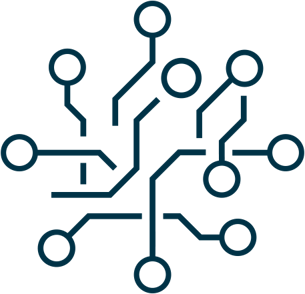Navigating Singapore's ever-evolving regulatory environment requires embracing agility in compliance management. For businesses aiming for sustainable success, the cornerstone of this agility is robust connectivity. This capability is not just about meeting the current standards; it’s about being prepared to adapt swiftly and efficiently to regulatory changes. Below, we delve into why connectivity is paramount in compliance processes and how it transforms challenges into opportunities for growth.
Why Connected IT Governance Matters for Compliance Management:
Connectivity plays a crucial role in compliance management for several reasons. It enhances the effectiveness of compliance management systems by ensuring data is integrated, processes are automated, and communication is streamlined across an organization. This leads to more proactive and efficient compliance practices that can adapt to changes in the regulatory landscape.

- Continuous Oversight Reporting: Ditch outdated periodic checks. Connected systems enable real-time monitoring of compliance activities, allowing immediate response to anomalies or breaches, significantly reducing non-compliance risks and penalties.
- Scalability and Adaptability: Regulatory requirements are not static—they evolve over time depending on market conditions. A scalable compliance solution allows you to seamlessly adjust your processes to meet these changing regulations. Whether it’s a new privacy law or industry-specific standard, connected IT governance tools and systems can easily accommodate them without disrupting operations.
- Data Integrity and Accuracy: Data integrity is crucial across different sectors. A connected governance system ensures data consistency across all compliance-related activities, reducing errors and enhancing overall accuracy. This will not only improve your compliance outcomes, but also enhance trust and credibility with stakeholders.
- Collaboration Across Departments: Compliance often involves multiple departments within an organization, including legal, finance, HR, and IT. Connectivity facilitates communication and collaboration across these departments, ensuring that everyone is aligned with the organization's compliance strategies and requirements.
- Centralized Compliance Management: Find it challenging to manage compliance across multiple systems and departments? A connected IT governance software centralizes compliance management efforts to streamline oversight and reporting procedures. It enables better coordination, collaboration, and visibility into compliance activities, ultimately improving efficiency and effectiveness.
- Adaptability to Regulatory Changes: Regulatory environments are constantly changing, and organizations must adapt quickly to stay compliant. Connectivity supports agility by allowing systems to be updated promptly in response to new or amended regulations, helping organizations maintain compliance at all times.
- Cost Efficiency: By improving efficiency and reducing the need for manual intervention, connectivity can lower the costs associated with compliance management. This includes reducing the risk of financial penalties for non-compliance and optimizing resource allocation.
Advisor 360: Your Connected Compliance Solution
Advisor 360 is a compliance management software that automates tasks, centralize documents, and monitor compliance across departments. It can help to streamline audits, minimize risks, and maintain regulatory compliance. Here’s a look at some of the benefits of each module within Advisor 360:Learn More: Scaling Your Business with Automated Compliance
Advisor 360 Modules:
- Asset Management: This module centralizes asset data, enhancing visibility across vertical and horizontal asset categories. It simplifies compliance and audit processes by tracking and managing asset compliance risks efficiently.
- Reporting & Alerts: Gain immediate insights into your IT governance posture with our continuous reporting dashboards. Identify and address potential compliance gaps with Adnovum Advisor 360, minimizing the risk of non-compliance.
- Data Governance: Automate detection and masking of non-compliant data processes, minimizing data breach risks and ensuring data privacy regulation compliance.
- Vulnerability and Patch Management: Leverage AI-powered centralized management for vulnerabilities and patches, prioritizing fixes based on security posture and business needs, for enhanced decision-making and reduced security risks.
- Infrastructure Monitoring: Monitor IT infrastructure comprehensively to ensure systems run efficiently. Quickly identify and address issues proactively, minimizing downtime and optimizing performance.
- Synchronous License Management: Advisor 360's license management system optimizes software license usage, reducing costs by reallocating unused licenses and ensuring compliance with licensing agreements.
- Observability and Efficiency: Gain near-real-time insights into the software development lifecycle (SDLC) with Advisor 360, enabling data-driven decision-making for improved efficiency and faster time-to-market. Supports self-service and automation for resource allocation and project management.
Benefits of Connected IT Governance and Compliance:
- Improved Compliance Agility: Adapt swiftly to changing regulatory requirements and compliance standards.
- Enhanced Data Integrity: Ensure the integrity and reliability of information across systems and processes by fostering a holistic approach to data management.
- Reduced Operational Costs: With streamlined IT governance practices, businesses can identify inefficiencies, eliminate redundancies, and optimize resource allocation for significant cost savings.
- Streamlined Compliance Management: Connected IT governance facilitates centralized management of compliance activities, such as audits, assessments, and reporting, to enable better coordination among stakeholders, simplify compliance tracking and monitoring, and reduce the administrative burden associated with compliance management tasks.
- Minimized Security Risks: By integrating IT governance processes with robust cybersecurity measures, organizations can proactively identify and mitigate security risks.
- Unlocking Sustainable Success: Connected IT governance lays the foundation for sustainable success by fostering a culture of accountability, transparency, and collaboration within the organization.





